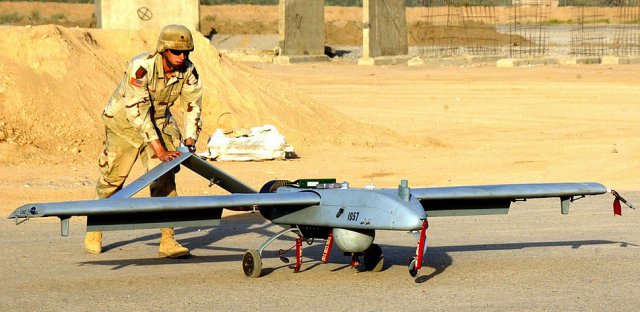 The U.S. Marine Corps has chosen a classified weapon to arm the AAI RQ-7B Shadow tactical unmanned aerial system (UAS) for a field evaluation in Afghanistan.
The U.S. Marine Corps has chosen a classified weapon to arm the AAI RQ-7B Shadow tactical unmanned aerial system (UAS) for a field evaluation in Afghanistan.
“The weapon is classified. It’s a high-TRL [technology readiness level] system,” says Lt. Col. Scott Anderson, product manager for Shadow in the Army’s UAS programme office, which is supporting the Marine Corps’ plan to weaponize the aircraft to meet an urgent operational need.
The Marines are working to have the unidentified weapon declassified to make it easier to test and deploy the armed Shadow.
Several companies offered small, precision-guided weapons to meet the Marine Corps’ requirement, including Raytheon, which proposed its 13.5-lb., unpowered, laser-guided Small Tactical Munition (STM). “We don’t know the details, but they chose someone else’s weapon,” says J.R. Smith, business-development manager for advanced missiles and unmanned systems.
Following an 18-month weaponization programme, the Marines plan a 12-month deployment with two Shadow systems before deciding whether to arm the rest of its 13 systems, Anderson says.
“It’s a field user evaluation. They wanted an off-the-shelf weapon. It’s not necessarily what will arm Shadow in the end,” Smith says, adding that Raytheon will continue to offer the company-developed STM.
Several new payloads are in the pipeline for Shadow, Anderson says. A signals-intelligence system was tested in January for Special Operations Command and the Joint Improvised Explosive Device Defeat Organization (Jieddo), he says, with a deployment decision due this month.
Jieddo also has approached the Army to deploy a synthetic-aperture radar (SAR) payload on the Shadow this fall, as a quick-reaction capability, Anderson says. The SAR system has not yet been selected.
Shadow upgrades under way include the Ku-band tactical common data link (TCDL), flight testing of which is under way. This upgrade includes encryption and the universal ground control system. “Limited user testing for TCDL will be next spring, and we field shortly after,” Anderson says.
An effort is under way to replace the Shadow’s engine, which has experienced bearing failures in Afghanistan’s high temperatures. Anderson says the Army received 14 responses to a recent request for information on alternative powerplants.
The Shadow engine was designed to provide a time between overhauls of 200 hr., but is achieving 150 hr. The Army’s objective for the replacement engine is 500 hr., while providing added capability at lower sustainment cost, he says.
Source: Aviation Week
